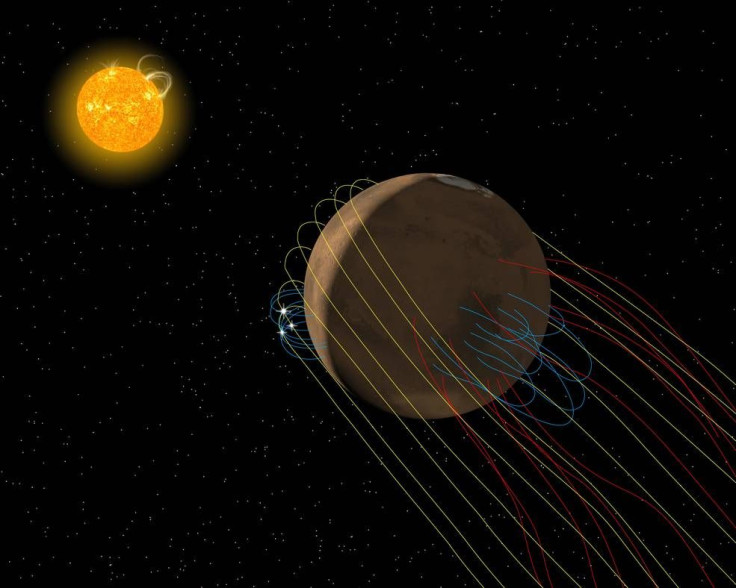Mars Has Magnetic Tail Twisted By Solar Wind, NASA’s MAVEN Finds

There is nothing unique about a planet having a magnetic tail, but the properties of the magnetotail trailing behind Mars make it unique in the solar system. The Martian magnetotail is twisted, likely a cause of its interaction with the solar wind, NASA’s Mars Atmosphere and Volatile Evolution Mission (MAVEN) spacecraft has found.
Mars does not have a global magnetic field, and its magnetosphere is formed by the interaction of solar wind with the planet’s upper atmosphere, according to Gina DiBraccio of NASA’s Goddard Space Flight Center in Greenbelt, Maryland, who is project scientist for MAVEN and presented this research Thursday at the 49th annual meeting of the American Astronomical Society’s (AAS) Division for Planetary Sciences in Provo, Utah.
“We found that Mars’ magnetic tail, or magnetotail, is unique in the solar system. It’s not like the magnetotail found at Venus, a planet with no magnetic field of its own, nor is it like Earth’s, which is surrounded by its own internally generated magnetic field. Instead, it is a hybrid between the two,” she said in a statement Thursday on NASA’s website.
The twist in its tail is what makes the Martian magnetotail unique, and this twist is a result of a process called “magnetic reconnection” — this occurs when the scattered remnants of Mars’ once-global magnetic field are joined by the sun’s magnetic fields carried on the solar wind. For magnetic reconnection to happen, the solar wind field and the Martian surface field need to be in opposite directions.
“Our model predicted that magnetic reconnection will cause the Martian magnetotail to twist 45 degrees from what’s expected based on the direction of the magnetic field carried by the solar wind. When we compared those predictions to MAVEN data on the directions of the Martian and solar wind magnetic fields, they were in very good agreement,” DiBraccio said.
The hybrid nature of Mars’ magnetotail had been predicted before, but the MAVEN team was the first to confirm it using the magnetometer instrument aboard the spacecraft.
This magnetic reconnection could also be causing Mars to lose some of its already very tenuous atmospheres to space. Interaction with the solar wind charges particles in the upper Martian atmosphere, and these ions respond to electrical and magnetic fields. The link between surface magnetic fields and solar wind fields gives these ions a sort of pathway — along with the magnetotail — to open space. Further, the energy released by magnetic reconnection “could actively propel ions in the Martian atmosphere down the magnetotail into space.”
© Copyright IBTimes 2024. All rights reserved.











